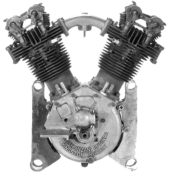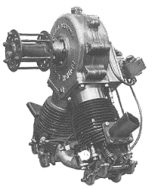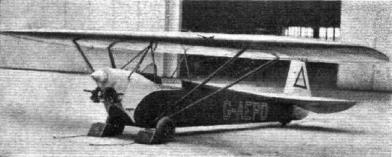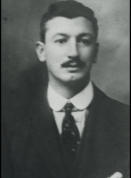
british anzani archive:

engines that British Anzani faced the post-war challenge. One of these engines
was to be a Hagens designed 35hp 57° V-twin of 1,100cc which eventually
found applications in motorcycles, light cars and aircraft right up until the start of
the Second World War. It was based on a 500cc single cylinder French Anzani
engine that had been sent over just after the War but Hubert Hagens
development skills produced a marvellously powerful engine that appeared in a
multiplicity of formats over the next 15 years. It was this little engine that took
Claude Temple to a land speed record on two wheels in 1923 and powered
AJW, OEC, McEvoy, Trump and Montgomery motorcycles, Morgan sports cars
and a score of different types of light aircraft. The engine had first appeared in
1921 and British Anzani had only ceased to produce the engine themselves in
1938 saying that “due to a rush of sub-contract orders and the fact that a new
light aero engine is in the design stage” it was surplus to requirements although
they did continued to manufacture small numbers on behalf of Luton Aircraft
until that company’s demise during the war.
Airplane manufacturers liked the powerful little motor: ANEC (The Air Navigation
and Engineering Company) of Addlestone, Surrey used it in their ANEC I & II
the British Caudron aircraft company of
Cricklewood and Alloa from 1914-24).
There is evidence of a significant alliance
with British Caudron and this sharing of
directors may be illustrative of that.
After World War I the British aviation industry
contracted and consolidated behind the larger
companies and many of the smaller firms
disappeared. One of these was British Caudron
who made no aircraft after 1919 and eventually
went into receivership in 1924. In the depths of
the War though they had needed more
engines and had given British Anzani the
finance to expand and build a production
capability at their Willesden site. This led to
their most productive year of the war delivering
107 100hp models. Later, a change in buying
policy by the Allies meant fewer companies
supplying the War effort effectively freezing out
the smaller
contributors and by February 1918 British Anzani had
all but given up trying to compete in the aero engine business. They were still
making spares for Curtiss however and doing development work for the
Government. They refurbished and repaired old engines and were desperately
trying to gain contracts for new engines - and it was with these brand new









Captain John Crosby “Jack” Halahan was
born on 28 February 1878 in Dulwich and
was educated at Dulwich College. He
joined the Royal Dublin Fusiliers in May
1899 seeing service in South Africa and
was active in the relief of Ladysmith and
promoted to Lieutenant in 1900. Promoted
again in 1908 to Captain he was then
attached to the RFC and gained his flying
certificate in the same year. Through
contacts he made at the GAC affiliated
flying school he was appointed as a
Director of British Anzani in 1912 and then manager of the Deperdussin
Flying School at Hendon in 1913. In 1914 he resigned from the GAC
subsidiaries and returned to active service. He served with distinction
throughout the war first as a pilot then as Commanding Officer of 12
Squadron in France and in 1917 he was promoted yet again to Wing
Commander. He was placed on the retired list in 1942 having attained the
rank of Group Captain. He was awarded the CBE and AFC and died in
Teignmouth, Devon in 1967.








